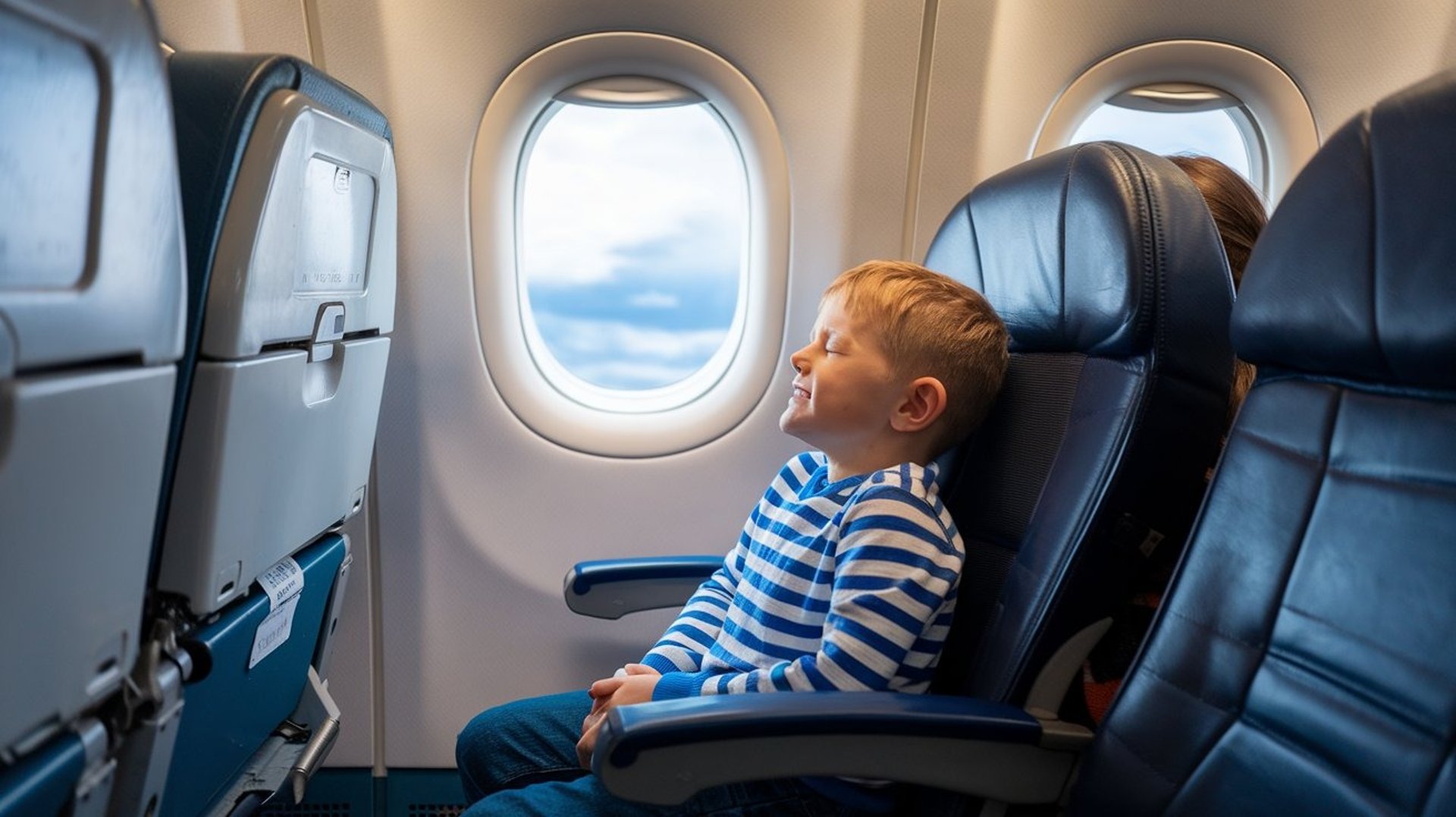
Fear of Flying in Children: Causes, Effects, and Strategies to Overcome It
Introduction
Flying can be an exciting and liberating experience for many, but for some children, the thought of being thousands of feet above the ground can provoke intense anxiety and fear. The fear of flying, also known as aerophobia, is a common issue among both children and adults. However, in children, the fear is often exacerbated due to their limited understanding of flight mechanics, the overwhelming sensory experiences involved, and perhaps, the influence of negative portrayals of aviation in media or personal experiences. This article will delve into the underlying causes of children's fear of flying, the effects this phobia can have on their well-being, and practical strategies for helping them cope with and overcome these anxieties.
Flying has become an integral part of modern life, making it crucial for children to become accustomed to air travel early on, especially in families who frequently travel. Whether for vacations, visits to distant relatives, or educational trips, air travel is often unavoidable. Helping children to understand and manage their fear of flying is therefore vital to ensure smooth and enjoyable travel experiences, as well as to avoid long-term issues with aerophobia that could persist into adulthood.
Causes of Fear of Flying in Children
Children’s fear of flying can stem from a variety of sources. While some of these may overlap with adult anxieties, there are several unique triggers for children due to their cognitive development and emotional sensitivity.
1. Lack of Understanding
One of the most common causes of fear of flying in children is a simple lack of understanding. Unlike adults, children may not fully grasp the physics behind flight, and the concept of a large, heavy object like an airplane staying in the air may seem illogical or even dangerous. They may ask questions like, "How does the plane stay in the sky?" or "What if we fall?" Without clear answers, this uncertainty can manifest as anxiety or fear.
2. Fear of Heights
Many children naturally have a fear of heights, and flying can exacerbate this. Being so far above the ground can be overwhelming for a child, especially when they can see the earth shrinking beneath them from a window seat. For children who already have a fear of heights (acrophobia), this can intensify their fear of flying.
3. Sensory Overload
Airports and airplanes are sensory-rich environments that can easily overwhelm young children. Bright lights, loud noises from the engines, unfamiliar smells, and sudden movements can all contribute to a sense of discomfort and anxiety. Many children, especially those with sensory sensitivities or disorders like autism, might struggle with these stimuli, leading to increased fear.
4. Fear of the Unknown
Fear of flying is often rooted in a fear of the unknown. Children, unlike adults, may not have had many prior flying experiences, and this unfamiliarity can lead to anxiety. They may be unaware of what turbulence is, what noises are normal on a flight, or what the various parts of the flying process (such as takeoff or landing) involve. Their imaginations can fill in the gaps with catastrophic scenarios, exacerbating their fear.
5. Media Exposure and Stories
Children are exposed to media in various forms, including movies, news, and television shows, many of which portray air travel in a negative or dangerous light. Films such as Cast Away, Final Destination, or Air Force One depict crashes, hijackings, and other terrifying scenarios that can shape children’s perceptions of flight. Even though these are fictional, the impact on a child’s imagination can be significant, leading them to believe that air travel is inherently risky.
Similarly, if a child has heard stories from friends or family members about bad experiences on flights (such as severe turbulence or emergency landings), they may internalize these stories, adding to their anxiety.
6. Parental Influence
Children are highly influenced by their parents' behaviors and reactions. If a parent has aerophobia or shows signs of anxiety about flying, a child is likely to pick up on these cues and develop a similar fear. Even subtle signs of nervousness in a parent, such as tense body language or offhand comments like “I hate flying,” can make a child associate air travel with danger or discomfort.
7. Previous Negative Experiences
If a child has had a negative experience on a previous flight, such as severe turbulence, a sudden descent, or witnessing another passenger panicking, this can create lasting fear. These past experiences can make future flights feel more threatening, even if the child doesn’t remember exactly what happened.
8. Fear of Losing Control
Children, especially as they get older, may experience anxiety related to losing control during a flight. Unlike in a car where they may feel they can communicate with the driver or understand the process better, an airplane places them in an unfamiliar environment where the pilot is unseen and the child has no influence over the journey. This perceived loss of control can be frightening.
Effects of the Fear of Flying on Children
The impact of a fear of flying on a child goes beyond discomfort during travel. It can affect them emotionally, mentally, and even physically. Additionally, it can strain family dynamics and limit a family’s willingness to travel, especially if flights are an essential part of their lifestyle.
1. Emotional Distress
Children with aerophobia may experience significant emotional distress leading up to and during a flight. This distress can manifest as crying, clinginess, or tantrums before boarding the plane. The anxiety may persist through the flight, resulting in symptoms such as excessive sweating, trembling, or hyperventilation.
For some children, the anxiety can even start days or weeks before the scheduled flight, leading to trouble sleeping, nightmares, or feelings of dread.
2. Disruptions to the Flight Experience
Once on board, children with a fear of flying may exhibit a range of behaviors that reflect their distress. These behaviors can include refusing to sit still, asking repetitive anxious questions (e.g., “Are we going to crash?”), and clinging to parents or refusing to let go. This can make the flight challenging not only for the child but also for their family and other passengers.
Additionally, some children may experience physical symptoms of anxiety, such as nausea, dizziness, headaches, or stomachaches, which can make the flight more uncomfortable.
3. Long-Term Anxiety
If left untreated, fear of flying can evolve into a persistent anxiety disorder that follows the child into adolescence and adulthood. Many adults who have a fear of flying can trace the origins of their anxiety back to childhood. If not addressed, this fear can limit opportunities for travel in the future, impacting their personal and professional lives.
4. Social and Family Impact
Families who have a child with aerophobia may face difficulties planning vacations or visits to distant relatives. The child’s fear may force the family to avoid flights altogether, limiting their travel options to local or regional destinations. This can also create tension within the family if other members wish to travel more extensively but feel restricted by the child’s fear.
Strategies to Help Children Overcome the Fear of Flying
Helping a child overcome their fear of flying requires patience, understanding, and a combination of psychological techniques, education, and gradual exposure. Here are some effective strategies:
1. Educating the Child About Flying
One of the best ways to reduce a child’s fear of flying is through education. Explaining the basic principles of how airplanes work can help demystify the process and reduce fear of the unknown. You can discuss topics like:
How airplanes stay in the air.
Why turbulence happens and why it’s not dangerous.
The safety measures that airlines take to ensure passengers’ safety.
There are many age-appropriate books, videos, and apps available that explain aviation in a simple and engaging way. Using visuals can help children understand that flying is a normal and safe mode of transportation.
2. Gradual Exposure to Air Travel
Gradual exposure is a technique commonly used in cognitive-behavioral therapy (CBT) for phobias. It involves introducing the child to aspects of air travel step by step to help them become accustomed to the experience.
This can start with visiting an airport without actually boarding a plane. Let the child explore the terminal, watch planes take off and land, and get used to the sounds of an airport. After that, you could take short flights to nearby destinations, allowing the child to experience the takeoff, flight, and landing process in a low-pressure situation.
3. Preparation Before the Flight
Creating a pre-flight routine can help reduce anxiety by providing a sense of predictability. This can include packing familiar and comforting items, such as a favorite stuffed animal or blanket, and planning distractions for the flight, such as movies, games, or books.
Talking about the flight beforehand, going through the itinerary, and explaining each step of the process—from check-in to landing—can also help reduce anxiety by setting expectations and reducing uncertainty.
4. Role Play and Simulation
For younger children, role-playing can be a helpful tool. You can act out a flight scenario at home using chairs to simulate airplane seats, pretend to go through security, and take off for a "flight" to a fun destination. This helps to normalize the experience and makes it feel less intimidating.
Additionally, some airports and aviation museums offer flight simulators that allow children to experience flying in a controlled, safe environment. These can be great for reducing fear and helping children feel more in control.
5. Relaxation Techniques
Teaching children relaxation techniques can provide them with tools to manage their anxiety during a flight. Deep breathing exercises, progressive muscle relaxation, and visualization techniques are simple methods that can be practiced before and during the flight.
Parents can practice these techniques with their child in advance to ensure the child is comfortable with them. For example, parents can teach their child deep breathing exercises to use during takeoff or turbulence. Techniques such as inhaling slowly through the nose, holding the breath for a few seconds, and exhaling gently can promote relaxation and reduce stress. Visualization techniques, such as imagining a calm place (like a beach or a favorite park), can also provide a mental escape during the flight.
6. Distraction During the Flight
Keeping children occupied during the flight can help distract them from their fear. Parents can prepare an activity kit with games, books, coloring supplies, or puzzles that the child enjoys. Having familiar and comforting items, such as a stuffed animal or a favorite blanket, can also help provide comfort and reassurance.
Additionally, many airlines offer in-flight entertainment systems, including movies, TV shows, and games that can captivate the child’s attention. Audiobooks and music playlists can also serve as soothing distractions, especially if they include content the child already enjoys.
7. Rewards and Positive Reinforcement
Using positive reinforcement to encourage bravery can be an effective strategy to help children overcome their fear of flying. Parents can create a reward system that acknowledges the child’s courage before, during, and after the flight. For example, parents can offer a small reward for getting through the airport without any anxiety-related issues, or they can promise a fun activity at the destination if the child remains calm during the flight.
Praising the child for their efforts, regardless of how well they managed their fear, can also help build confidence. Children should feel proud of their bravery, even if they experience anxiety during the process. Celebrating small victories along the way can build a sense of accomplishment and reduce future fear.
8. Therapy and Professional Support
For children with severe aerophobia, professional help may be necessary. Cognitive-behavioral therapy (CBT) is a common and effective treatment for anxiety disorders, including fear of flying. In CBT, children learn to identify negative thought patterns and replace them with more rational, positive ones. Exposure therapy, a specific type of CBT, involves gradually exposing the child to flying-related scenarios to desensitize their fear over time.
If needed, parents can seek out a child psychologist or therapist who specializes in anxiety disorders. A mental health professional can work with the child to develop personalized coping strategies and help them address any deeper underlying issues that may be contributing to their fear.
In some cases, medication may be considered if the child’s fear is significantly affecting their quality of life or ability to travel. This option should always be discussed with a healthcare professional to ensure it is appropriate and safe for the child.
Parental Involvement and Support
Parents play a key role in helping their children overcome the fear of flying.
It’s important that they maintain a calm and positive attitude toward flying, as children often mirror the emotions of their caregivers. Here are some tips for parents and caregivers:
1. Model Calm Behavior
Children are highly perceptive and can pick up on their parents’ emotions, even if those emotions are subtle. If a parent exhibits signs of nervousness or fear, the child is more likely to feel anxious as well. Therefore, it’s essential for parents to model calm and relaxed behavior before and during the flight, even if they themselves feel uneasy about flying.
Parents should avoid making negative comments about flying, even in jest. Comments such as "I hope the flight isn’t too bumpy" or "I hate flying" can reinforce the child’s belief that flying is something to be feared. Instead, parents should use reassuring language and provide comfort when necessary.
2. Encourage Open Communication
Encouraging children to talk about their fears is crucial. Parents should ask their child how they feel about flying and listen empathetically without judgment. Validating the child’s emotions by saying something like, "I understand you’re scared, and it’s okay to feel that way," can make the child feel supported and understood.
However, parents should avoid reinforcing irrational fears. For instance, if a child says, "What if the plane crashes?" a parent can respond with a factual yet comforting statement such as, "Planes are designed to be very safe, and crashes are extremely rare. The pilots are highly trained to handle the flight."
3. Set Realistic Expectations
It’s important for parents to set realistic expectations when it comes to helping their child overcome their fear of flying. Some children may take longer than others to feel comfortable in the air, and setbacks are normal. Patience is key, and parents should acknowledge that progress, no matter how small, is a step in the right direction.
4. Be Consistent
Consistency is important in helping children overcome their fear. If a parent decides to use a particular strategy, such as a relaxation technique or a reward system, it’s essential to apply it consistently during every flight. Establishing a routine for flying can help the child feel more secure and in control, reducing anxiety over time.
To finish...
The fear of flying in children is a common issue that can stem from a variety of factors, including a lack of understanding, fear of heights, previous negative experiences, and sensory overload. While this fear can have a significant impact on a child’s emotional well-being and family travel plans, it is a phobia that can be managed and overcome with the right approach.
By educating children about flying, gradually exposing them to air travel, practicing relaxation techniques, and modeling calm behavior, parents can help their children build confidence in the air. For children with more severe fears, professional therapy or support may be necessary.
Ultimately, helping a child overcome their fear of flying requires patience, empathy, and ongoing support. By addressing the fear early on and working through it together, families can ensure that air travel becomes a positive, stress-free experience, opening the doors to a lifetime of adventure and exploration. Be a Veneflight Parents
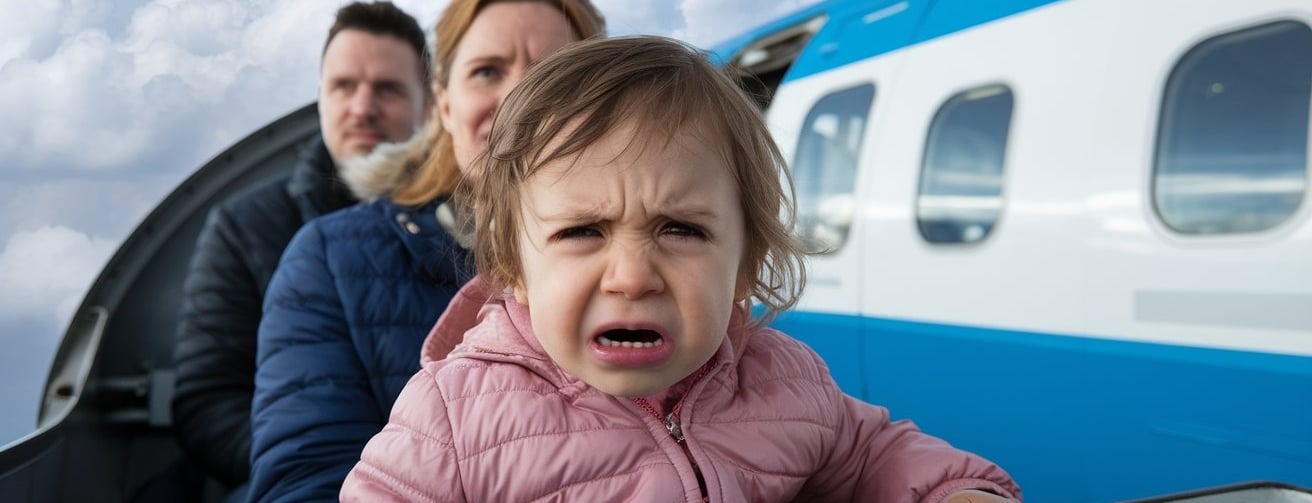

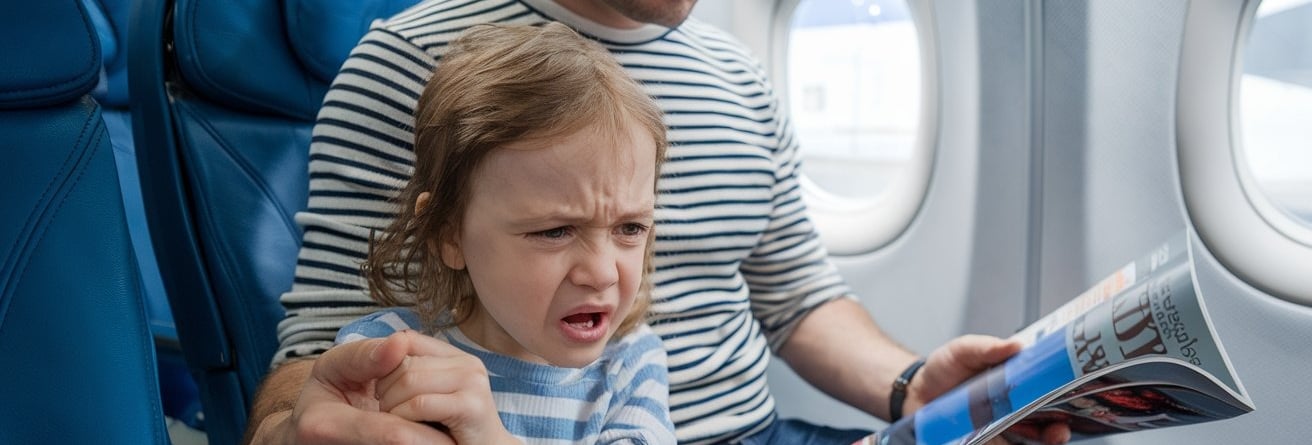


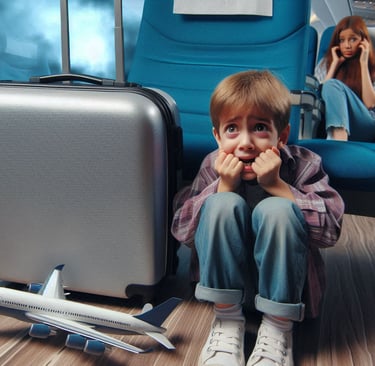
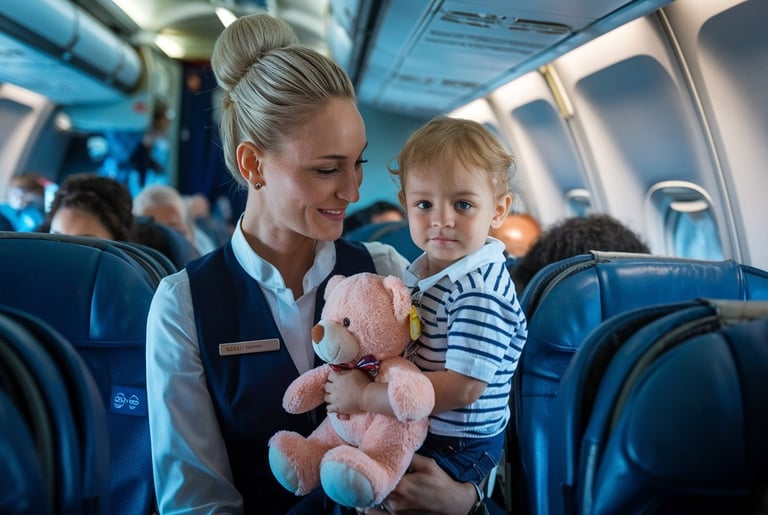

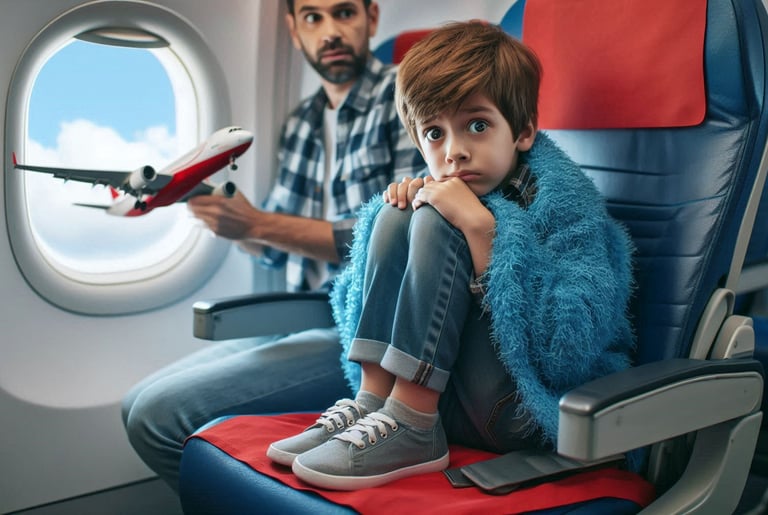



"Although the sky is not yours, the wings belong to you"
Remember:
Initial Online Aviation School
351 938457584 (whatsapp)
© 2024. All rights reserved.


351 938780295
